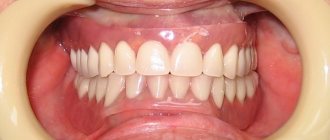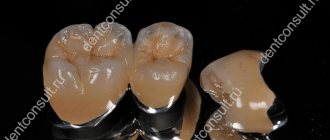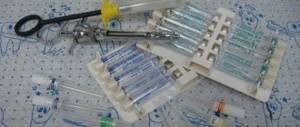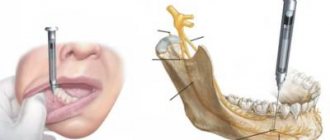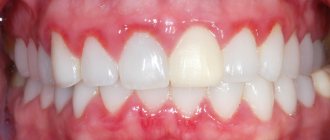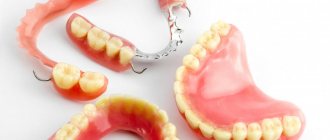The safety of using local anesthesia in the treatment of pregnant women remains an unresolved issue at present. The range of doctors’ opinions is as wide as possible: from “it can be used at any time, it’s absolutely harmless” to “it’s absolutely not allowed during any week, the risk of complications for the mother and child does not justify the benefits of dental treatment.” The reason for this range of judgments is the almost complete lack of evidence for the toxicity/harmlessness of local anesthetics during pregnancy. Pharmacological companies are in no hurry to test their drugs on pregnant women. There is catastrophically little scientific research on this topic. Therefore, significant filtering of information is required. It is not possible to rely on expert opinion, since there are no experts on this problem in the world. Not only in Russia, but also in countries with developed medicine, the issue of using anesthesia (and even the possibility of dental treatment in general) during pregnancy is decided independently by each doctor. There are no strict standards for providing care to pregnant women.
Concerns of doctors and patients
A survey of 702 private dentists in Germany showed that only 61% of them treat pregnant patients, 35.5% postpone treatment until the postpartum period, and 3.5% refer them to other clinics. Only 10% of dentists perform all necessary types of treatment, 14% refuse local anesthesia. Almost half of the dentists indicated that they would not treat in the first trimester, and 8.5% - in the second.1
In a survey of 116 dentists in Connecticut, USA, 97% of dentists said they had treated pregnant women, but only 45% felt comfortable doing so.2
Seeking a consultation with a gynecologist does not clarify the situation much. A survey of 138 obstetricians in North Carolina, USA, found that 49% rarely or never recommend dental examinations to patients.3
Women themselves have little idea of the risks of refusing treatment during pregnancy. In a 2012 survey, two-thirds of Australian women said they did not seek dental care during pregnancy, even if they had problems.4
When is anesthesia needed?
Although anesthesia is available during pregnancy, your doctor will try to avoid a painkiller injection if it is not necessary. For example, when a patient presents with an uncomplicated form of caries, treatment can be painless. Painful sensations often depend on the individual sensitivity and mood of the woman, so you should inform your doctor about your characteristics in advance. You cannot do without anesthesia if the patient needs to be treated for deep caries, periodontitis, a dental cyst, or if a tooth needs to be removed.
Is dental treatment necessary during pregnancy?
Changes in oral health and food intake during pregnancy may increase the incidence of dental caries.5 If left untreated, pulpitis and periodontitis may occur. Periodontitis can cause periostitis and more serious complications.
Hormonal changes in pregnant women increase the incidence of gingivitis and periodontitis.6 Untreated periodontitis, according to some studies, increases the risk of low birth weight,7 premature birth, miscarriage and preeclampsia.8
Prompt management of periodontal problems improves the health of not only the mother, but also the newborn.9 Therefore, proper monitoring of oral health during pregnancy and treatment if necessary is recommended.10
What to do if you are injured or have a question about emergency surgery?
In any situation, do not forget to tell the doctors that you are pregnant, indicate the due date and indicate whether you have a burdened obstetric history (complications during preparation for pregnancy or complications from this and previous pregnancies). Your escorts should know this too.
If you are offered hospitalization, do not refuse, just ask to be taken to a multidisciplinary hospital, where, in addition to a specialist in your illness, there will also be obstetricians and gynecologists.
Don’t be afraid if, in case of severe pain, the emergency doctors give you an injection of Morphine or Promedol: these narcotic analgesics have been studied very well, and it has been proven that they do not harm the baby, and you will reduce the risk of miscarriage due to adrenaline and its derivatives, which accumulate in the body from pain and increase the excitability of the uterus. Both mother and child do not become accustomed to narcotic analgesics in such a short period.
Tell the anesthesiologist everything about your chronic diseases and about your pregnancy, including the presence of toxicosis, intolerance not only to drugs, but also to foods and odors, because he will have to choose the method of anesthesia during surgery.
Common misconceptions about local anesthesia
There is a special anesthesia for pregnant women
No, expectant mothers are given the same anesthesia as everyone else. The same articaine, mepivacaine, lidocaine and novocaine.
Anesthesia during pregnancy can lead to a lower IQ in the child and other cognitive impairments.
This fact was indeed mentioned in the medical literature, but it has nothing to do with local anesthesia used in dentistry. Decreased IQ has been reported in children whose mothers received general anesthesia.11
Previously used anesthetics were dangerous, but modern ones do not penetrate (or almost do not penetrate) through the placental barrier, and therefore are completely harmless. Most often this is stated about articaine (ultracaine).
In fact, articaine also penetrates, like all other anesthetics. But its percentage in the fetal blood is really lower - 32% of the content in the mother’s bloodstream. Lidocaine has a similar figure - 52-58%, mepivacaine - 64%.12 Adrenaline also passes through the placenta and has an effect on the fetus.13
Anesthesia can be given to pregnant women, but only without adrenaline.
For this reason, many dentists use mepivacaine, an anesthetic that does not have a vasodilator effect and is therefore used without a vasoconstrictor. However, its analgesic effect lasts on average only 25-40 minutes.14 This is not enough for most dental procedures. Mepivacaine penetrates the placenta to a greater extent, and at a faster rate (compared to lidocaine and adrenaline). And has a category C according to the FDA classification. This is not the best choice for most women. It is indicated for patients with arterial hypertension, paroxysmal ventricular tachycardia, atrial fibrillation, bronchial asthma and allergies to sulfites (added to the carpule to stabilize adrenaline).
Adrenaline itself also has a category C. But experimental animals were administered astronomical doses of this drug, at which serious teratogenic effects were identified. For example, in 1981, adrenaline at a dosage of 500 mg per kilogram of body weight caused a decrease in reproductive capacity in hamsters.15 For humans, such a horse dose (calculated by weight) is not used even in case of anaphylactic shock or cardiac arrest. A dental carpule contains 0.009 mg or 0.018 mg of adrenaline; more than 7-8 carpules cannot be done at one time, and the mass of even the most graceful lady is many times greater than the mass of a hamster.
Theoretically, it has been suggested that the vasoconstrictor may cause fetal hypoxia by reducing uteroplacental blood flow. In an experiment on sheep, a decrease in fetal blood flow for several minutes was noted.16 But to date there has been no evidence of a negative effect on the human fetus.
In addition, it should be recalled that adrenaline is the body’s own hormone; it is present in the bloodstream regardless of whether it was exogenously administered or not. And the endogenous hormone is intensely released just in case of pain, fear, panic. That is, when weak, adrenaline-free anesthesia does not provide sufficient pain relief.
Adrenaline increases the tone of the uterus and can lead to miscarriage or premature birth.
This is such a common misconception that it is worth explaining the situation in detail. Adrenaline activates both alpha receptors of the uterus (increasing tone) and beta receptors (decreasing tone). So its effect on β2-adrenergic receptors is predominant. Adrenaline reduces uterine tone.17 Moreover, with epidural anesthesia during labor itself, adrenaline is contraindicated because it causes atony and inhibits the second stage. Miscarriages during dental treatment under local anesthesia have not yet been encountered anywhere in the world (or at least there is not a single mention of this in the professional literature).
Previously, not only adrenaline, but also norepinephrine was added to the anesthetic solution. Now it has been completely abandoned. So norepinephrine activated α-adrenergic receptors more and increased uterine tone. Perhaps this is where such a misconception originated.
Local anesthesia during pregnancy is absolutely harmless (if performed correctly).
For a long time, indeed, no convincing evidence of any special teratogenic or toxic effects on the child and mother was found. Studies on this issue have been sporadic and with a small sample. But in 2015, the results of a study conducted in Israel back in 1999-2005 of 210 pregnant women whose dental treatment was performed under local anesthesia were published. They were compared with 794 pregnant women who did not undergo the procedure. The frequency of anomalies in children of the first group was 4.8%, the second – 3.3%. The authors considered the difference to be insignificant and concluded that the use of dental local anesthetics, as well as dental treatment during pregnancy, does not pose a significant teratogenic risk.18 Subsequent authors in articles devoted to this problem began to use this conclusion as further evidence of the safety of local anesthesia.
However, this conclusion raised objections among other experts.19 Not everyone thought the 1.5% difference was insignificant. After all, if the percentage of anomalies had crossed the 5% barrier even slightly, and according to statistical analysis, the conclusion would have to be changed to the exact opposite - local anesthesia significantly increases teratogenic risks.
In my opinion, 1.5% is still a significant increase in risk. But every expectant mother has the right to decide this for herself; the dentist should not impose his own opinion on her.
Is it allowed to treat teeth during pregnancy?
Of course yes, and sometimes it’s simply necessary. A problematic oral cavity is not only decayed teeth, bad breath and unbearable pain in an inflamed tooth, but primarily the cause of the appearance and spread of infection, which must be prevented and treated at an early stage of pregnancy.
If the situation has already become complicated, the infection will spread throughout the body with pieces of food, saliva and blood. A particularly dangerous situation is when the inflammation is already located near the tooth roots, where blood vessels and bone tissue are located.
Even if during pregnancy a dental infection did not harm either the woman or the child in any way, this can happen after childbirth. After all, every mother loves to kiss and hug her newborn baby, and along with tenderness, the mother passes on her microflora to the child, including a tooth infection. If bacteria enter a child's body that is still fragile after birth, this can lead to many serious problems.
How to choose the optimal anesthetic?
1. First, you need to decide whether pain relief is really necessary. Many dental procedures are painless or slightly painful. Professional teeth cleaning, treatment and prosthetics of pulpless teeth, in some cases, treatment of caries or wedge-shaped defects in living teeth are unpleasant, but often it is quite possible to endure them without experiencing unbearable suffering. Therefore, it is recommended to try this safest approach. If serious pain occurs, there is no need to torture yourself - it is wiser to agree to local anesthesia.
Cosmetic procedures (teeth whitening, installation of veneers) are completely inappropriate during pregnancy - they can and should be postponed.
2. From the entire range of anesthetics, in the absence of contraindications, it is preferable to choose 4% articaine with adrenaline 1:200,000. Articaine, although it has category C according to the FDA classification, is safer than other anesthetics. Its teratogenic effect was discovered when laboratory rabbits and rats were given loading doses of 4% articaine in combination with 1:100,000 adrenaline (2-4 times the maximum permissible concentration for humans). When using drugs at the level of the maximum permissible concentration for humans, no teratogenic effect was detected in experimental animals.20 Moreover, the concentration of 1:200,000 is half as low, and no one will use 7 carpules at a time (the maximum permissible volume) in pregnant women.
3. If such anesthesia turns out to be ineffective, then it is better to use the second carpule with a ratio of 1:100,000 articaine and adrenaline. The chances of achieving deep pain relief are significantly increased.
4. If adrenaline is completely contraindicated or significantly increases the risk of complications (arterial hypertension, paroxysmal ventricular tachycardia, atrial fibrillation, bronchial asthma, hyperthyroidism, pheochromocytoma, etc.), then you need to use 3% mepivacaine without adrenaline.
5. It is acceptable to use lidocaine with an adrenaline concentration of 1:200,000 or 1:100,000 for pregnant women. Lidocaine has category B. However, the effectiveness of its anesthesia is 1.5 times less than that of articaine.21 And the risk of allergic reactions is higher (up to to anaphylactic shock).
Pain relief for expectant mothers - the best choice
Epidural anesthesia is considered the safest method of pain relief for mother and baby during pregnancy .
To carry it out, a needle is inserted through holes in the spinal canal directly above the dura mater of the spinal cord, into the epidural space - just where the nerve roots pass that carry pain impulses from the uterus. To make the procedure painless, the skin at the site of the intended injection is numbed before the injection. Then a special needle is inserted into which a thin silicone tube (catheter) is inserted; the needle is removed, and the catheter remains in the epidural space - a strong local anesthetic is injected into it. As needed, a medicinal substance can be added through the catheter, prolonging the analgesic effect to 24-36 hours.
During epidural anesthesia, the patient should be in the most bent position: lying on her stomach, bent over, or sitting, bending over.
After administration of the drug, pain relief develops within 10-20 minutes.
When the catheter is inserted, it may touch a nerve, causing a brief shooting sensation in the leg. Another thing that can accompany anesthesia is sometimes a feeling of numbness, weakness and heaviness in the legs.
The following complications may occur after this type of anesthesia:
- Headache appears on days 1-3 after anesthesia in approximately 1% of cases. If a headache occurs, anesthesiologists prescribe bed rest, fluids and painkillers.
- Skin itching may occur at the injection site, which can be treated by taking antihistamines under medical supervision.
- Due to the prolonged position on the back and the effect of the anesthetic on the intercostal muscles, the woman may have difficulty breathing. In this case, oxygen is prescribed through a special mask.
- When an anesthetic is injected into the veins of the epidural space, dizziness, palpitations, a metallic taste in the mouth, and numbness of the tongue may occur. In order to prevent these unpleasant sensations, a test dose is first administered to the woman before the entire volume of the anesthetic is administered.
- Sometimes the effect of the anesthetic may affect only one half of the body. This can be easily corrected by tightening the catheter slightly.
Contraindications for epidural anesthesia are:
- sepsis;
- skin infection at the site of the intended injection;
- blood clotting disorder (before epidural anesthesia, a blood clotting test is performed);
- bleeding;
- neurological diseases;
- patient's refusal of pain relief.
For minor operations performed in the third trimester, other types of local anesthesia . They are less dangerous at this time than at the beginning of pregnancy because the risk to the baby decreases as it develops.
conclusions
- Anesthesia can be given to pregnant women. And it is necessary (if required).
- There is no special anesthetic for pregnant women.
- Some stories about the dangers of anesthesia refer to general anesthesia, not local anesthesia (and there is still a lot of uncertainty there).
- Modern anesthetics are better than the old ones, but they are not completely harmless.
- Anesthesia with adrenaline can be done, and in most cases it is even desirable.
- Adrenaline reduces the tone of the uterus; there have been no miscarriages caused by local anesthesia.
- Local anesthesia in dentistry is not completely safe. It is necessary to balance between the expected benefits and possible risks.
- Of the drugs, 4% articaine with an adrenaline concentration of 1:200,000 is preferable.
- You can also use articaine with an adrenaline concentration of 1:100,000, mepivacaine without adrenaline, lidocaine with adrenaline.
Ultracaine: instructions and pharmacological properties
The drug contains an analgesic with local action and a vasoconstrictor component. Thanks to this composition, Ultracain, the price of which differs slightly from other local analgesics (from 250 to 370 rubles), has received a number of advantages among drugs for local anesthesia.
- The effect of anesthesia begins in 3-4 minutes and lasts up to 45 minutes without repeated injections.
- The vasoconstrictor component minimizes the entry of the main active drug into the blood, thereby reducing the risk of side effects and allergic reactions.
- Due to its rapid elimination, it does not interfere with tissue regeneration and recovery after interventions.
The drug is injected into the tissue directly at the site of exposure and provides local anesthesia for the period of treatment or surgery.
Literature
- Pistorius J, Kraft J, Willershausen B. Dental treatment concepts for pregnant patients – results of a survey. Eur J Med Res. 2003 Jun 30; 8(6):241-6.
- Pina PM, Douglass J. Practices and opinions of Connecticut general dentists regarding dental treatment during pregnancy. Gen Dent. 2011 Jan-Feb; 59(1):e25-31.
- Wilder R, Robinson C, Jared HL, Lieff S, Boggess K. Obstetricians' knowledge and practice behaviors concerning periodontal health and preterm delivery and low birth weight. J Dent Hyg. 2007 Fall; 81(4):81.
- George A, Shamim S, Johnson M, Dahlen H, Ajwani S, Bhole S, Yeo AE. How do dental and prenatal care practitioners perceive dental care during pregnancy? Current evidence and implications. Birth. 2012 Sep;39(3):238-47
- Kidd E, Fejerskov O. Essentials of dental caries. 3rd ed. Oxford: Oxford University Press; 2005. pp. 88–108.
- Amini H, Casimassimo PS. Prenatal dental care: A review. Gen Dent. 2010; 58:176–18
- Vergnes JN, Sixou M. Preterm low birth weight and maternal periodontal status: A meta-analysis. Am J Obstet Gynecol. 2007; 196:135.e1–135.e7.
- Xiong X, Buekens P, Fraser WD, Beck J, Offenbacher S. Periodontal disease and adverse pregnancy outcomes: a systematic review. BJOG. Feb 2006; 113(2):135-43.
- López NJ, Da Silva I, Ipinza J, Gutiérrez J. Periodontal therapy reduces the rate of preterm low birth weight in women with pregnancy-associated gingivitis. J Periodontol. 2005;76(11 Suppl):2144–53.
- Lee JM, Shin TJ. Use of local anesthetics for dental treatment during pregnancy; safety for parturient. J Dent Anesth Pain Med. 2017 Jun; 17(2):81-90. Translation of this article into Russian: Use of local anesthetics for dental treatment during pregnancy; safety for women in labor.
- Yu CK, Yuen VM, Wong GT, Irwin MG. The effects of anesthesia on the developing brain: a summary of the clinical evidence. F1000Res. 2013 Aug 2;2:166.
- Strasser K, Huch A, Huch R, Uihein M. Placental transfer of carticaine (Ultracain) a new local anesthetic agent. Z Geburtshilfe Perinatol. 1977 Apr; 181(2):118-20.
- Morgan CD, Sandler M, Panigel M. Placental transfer of catecholamines in vitro and in vivo. Am J Obstet Gynecol 1972; 112:1068–75.
- Haas A. An update on local anesthetics in dentistry. J Can Dent Assoc. 2002 Oct; 68(9):546-51.
- Hirsch KS, Fritz HI. Teratogenic effects of mescaline, epinephrine, and norepinephrine in the hamster. Teratology. 1981 Jun; 23(3):287-91.
- Hood DD, Dewan DM, James FM., 3rd Maternal and fetal effects of epinephrine in gravid ewes. Anesthesiology. 1986; 64:610–613.
- Mike Samuels, Nancy Samuels. New Well Pregnancy Book: Completely Revised and Updated. 1996
- Hagai A, Diav-Citrin O, Shechtman S, Ornoy A. Pregnancy outcome after in utero exposure to local anesthetics as part of dental treatment: A prospective comparative cohort study. J Am Dent Assoc. 2015 Aug; 146(8):572-580.
- Best AM. More on local anesthetics in pregnancy. J Am Dent Assoc. Dec 2015; 146(12):868-9.
- https://www.drugs.com/pro/articaine-and-epinephrine-injection.html
- Malamed SF. Handbook of local anesthesia. 4th ed. St. Louis, Mosby; 1997.
Indications for epidural, spinal, spinal-epidural anesthesia
Epidural and spinal anesthesia are especially in demand for various complications of pregnancy, for example:
- hypertensive disorders (preeclampsia, chronic arterial hypertension);
- childbirth in women with heart, kidney, and respiratory diseases;
- childbirth in women with antenatal fetal death;
- abnormalities of contractile activity (types such as discoordinated labor, excessively violent labor, which are accompanied by severe pain);
- excessive pain syndrome. To determine whether regional anesthesia is needed, a labor pain assessment is performed. The woman in labor is asked to rate her pain on a visual analogue scale (with a maximum value of 10 points). If the pain score is greater than 4, regional analgesia may be considered;
- premature birth, as a method of pain relief that is more gentle for the child.
Also, epidural or spinal anesthesia is possible for young girls in their first birth, who are the most emotionally labile. In any case, the decision to use this method of pain relief is considered individually, made together with an anesthesiologist and obstetrician-gynecologist, and all the pros and cons of regional analgesia are taken into account. In this case, the patient gives informed consent to this method of pain relief, because any medical intervention also has side effects.
In addition, regional anesthesia may be used for caesarean section. In this case, a higher concentration of the drug is injected, which makes it possible to cause a feeling of “numbness” in the abdominal cavity, sufficient for surgery.

